ART-PRESENTATION: Healing
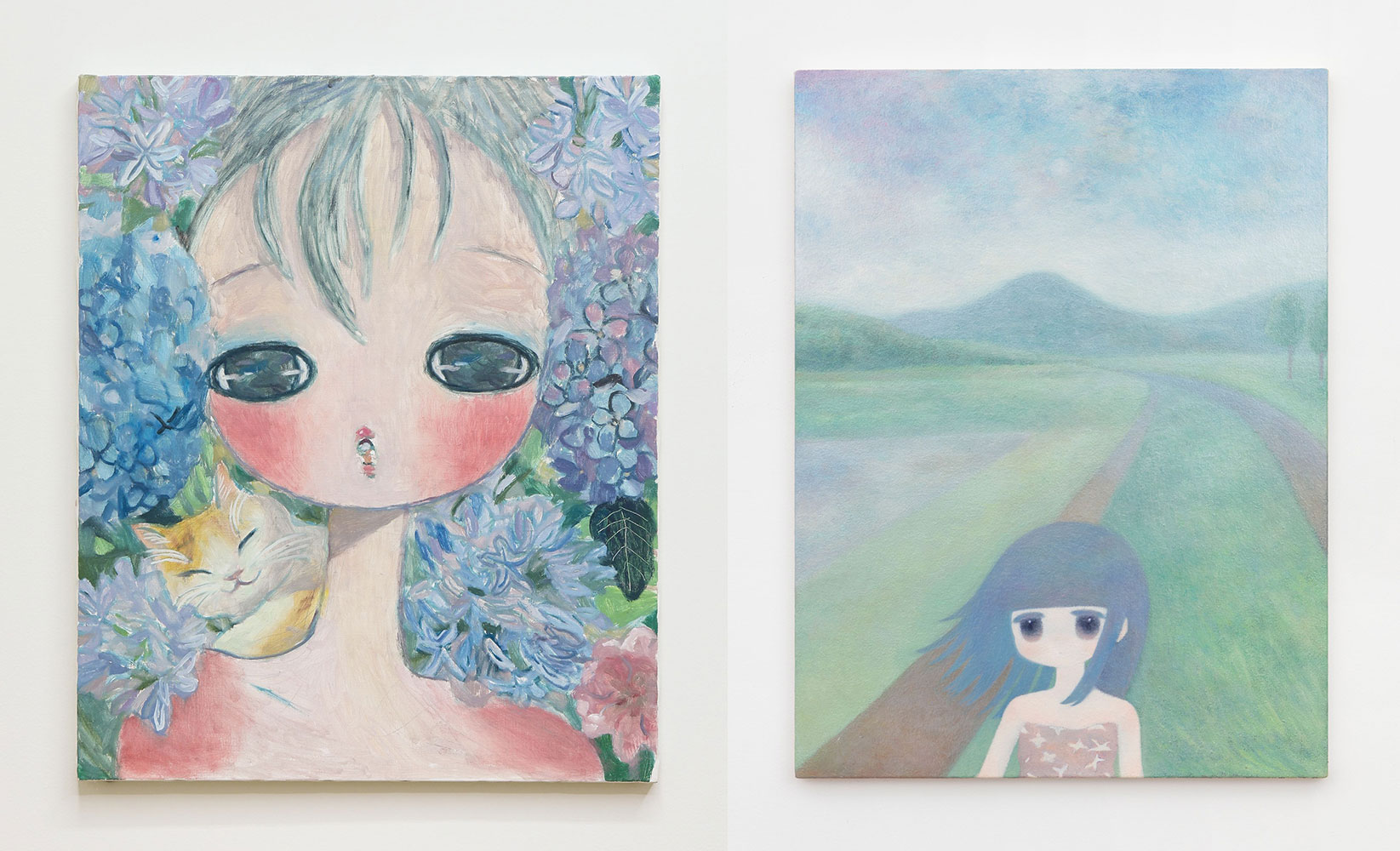 Kaikai Kiki Co. is an art production and artist management company founded by Takashi Murakami. The name “Kaikai Kiki” which means “brave, strong and sensitive,” was borrowed from a critic in the late 17th century who used it to describe the paintings of Eitoku Kano.The company’s primary goals include the production and promotion of artwork, the management and support of select young artists, general management of events and projects, and the production and promotion of related merchandise. The company and its galleries represent a number of prominent international artists.
Kaikai Kiki Co. is an art production and artist management company founded by Takashi Murakami. The name “Kaikai Kiki” which means “brave, strong and sensitive,” was borrowed from a critic in the late 17th century who used it to describe the paintings of Eitoku Kano.The company’s primary goals include the production and promotion of artwork, the management and support of select young artists, general management of events and projects, and the production and promotion of related merchandise. The company and its galleries represent a number of prominent international artists.
By Efi Michalarou
Photo: Perrotin Gallery Archive
The exhibition “Healing” by Kaikai Kiki artists explores the multifaceted and eccentric universe that is Takashi Murakami’s Superflat and the far-reaching and deep influence of Japanese ceramic arts in the context of Bubblewrap. Where in the West art is predicated on the differences between high and low culture, original and derivative, art and commodity, Superflat establishes itself as an independent lineage of Japanese contemporary art that roots itself in anime and manga. Takashi Murakami first coined the term Superflat in his examination of postwar Japanese society, where the boundary between traditional and contemporary culture was perceived to be ‘flat’. Past and present, original and derivative, highbrow culture and lowbrow culture merge as one in Super-flat, subverting the discourse of Western conventional divisions and challenging their legacy in the contemporary art landscape with an idiosyncratic Japanese sensibility. The radical affiliation and lack of distinction between post-war Japan’s fine arts and popular arts is strongly linked to otaku culture. In its infantile and marginal existence, the world of otaku could be seen as similar to post-war Japanese society.
Chiho Aoshima started her art practice in the 1990s, rising to prominence with the international debut of her masterful, digitally rendered work in the acclaimed Superflat exhibition held at the Museum of Contemporary Art, Los Angeles in 2001. A self-taught artist and an early member of the Japanese art collective Kaikai Kiki, she began working in Adobe Illustrator before expanding into traditional mediums namely drawing, water-color and, more recently, ceramics. Otherworldly figures and dream-like landscapes depicting child-like spirits, anthropomorphic flora, fauna and even skyscrapers, feature in Aoshima’s Illus-trator-drawn prints and murals, hand-painted works and digital animations (in collaboration with New Zealand animator Bruce Ferguson). Distinctly feminine and spiritual, the worlds and their inhabitants Aoshima has created are built on the natural world, playful and often humorous, belying melancholy and darkness. Born in Tottori Prefecture, Japan in 1990, Yukimasa Ida completed a master’s degree in painting at Tokyo University of the Arts in 2019. In addition to participating in the 2016 VOCA exhibition, Ida won the Special Jury Prize in the 2016 Contemporary Art Foundation Awards. In 2017, he became the youngest person to take part in the Leonardo DiCaprio Foundation Auction. Based in Tokyo, Ida is active throughout the world. Running throughout his work is the theme of once-in-a-lifetime occurrences and unrepeatable experiences. Along with his paintings, Ida has expanded his practice to include three-dimensional works and a variety of other media. Emi Kuraya was born in 1995 in Kanagawa Prefecture, Japan. After holding a solo exhibition at Hidari Zingaro and becoming represented by Kaikai Kiki in 2018, Emi Kuraya has gained further popularity through her participation in Hong Kong Art Basel and Frieze New York.
Born in Hong Kong in 1972, Kasing Lung moved to the Netherlands with his family as a child. Having grown up in Europe whereby fairy tales and folklores are deeply rooted in people’s cul-ture, Kasing quickly developed a profound interest in the fantastical and began creating his very own magical realm. Now a celebrated illustrator, Kasing gave life to countless characters under his pen and brush. Amongst them, the bunny-eared Labubu is the most well-known and makes recurring appearances in the artist’s extensive oeuvre. A graduate of New York City’s Parsons School of Design (BFA, 1996), MADSAKI was born in Osaka, Japan in 1974 and raised in New Jersey, USA – experiences between two cultures that formed his aesthetics and personality. While much of MADSAKI’s work centers on his interest in art history and critiquing mass culture with references to slang, movies and manga characters, the artist has recently been exploring more personal, intimate topics. To express this visually, MADSAKI developed a signature style using spray paint as a fine art medium, stemming from the fact that he has never participated in illegal graffiti on the streets. The artist is particularly known for his Wannabe series, which at first glance humorously targets old masters, yet their deeper meaning is a reoccurring theme that can be found throughout MADSAKI’s artistic practice – an attempt to use laughter and humor as both distraction and therapy for his internal turmoil. Takashi Murakami (born in Tokyo in 1962), who has a PhD in nihonga painting, combines the most cutting-edge techniques with the precision and virtuosity of traditional Japanese art. Inspired by manga and kawaii culture, his irresistible world is peopled by monstrous and charming char-acters alike, facetiously portrayed as descendants of past myths. His theory of the Superflat aes-thetic, which he introduced in 2001 with the trilogy exhibition he curated (the third part was titled “Little Boy,” a reference to the code name for the atomic bomb dropped on Hiroshima in 1945), attempts to blur the boundaries between popular art and high art; the Superflat movement has explored the evolution of Japan’s understanding of its post-Hiroshima condition and the interre-lationships between vanguard art, manga and anime, and their forerunner, ukiyo-e woodblock prints. The absence of perspective, the two-dimensionality of ancient Japanese art, filters into every medium. Since his first monographic exhibition outside Japan in 1995 at Perrotin, Murakami has achieved recognition as one of the most prominent contemporary artists of his time, and his work has been featured in numerous solo exhibitions at museums and art institutions throughout the world.
Shin Murata (b. 1970 in Kyoto) graduated from Kyoto Seika University’s Ceramics Department in 1993, completing his graduate studies the following year. He established an independent studio following his apprenticeship under ceramicist Yoshitaka Araki. After building his own kiln in Kita-ku, Kyoto, in 2003, he went on to hold over ten exhibitions a year all across Japan. Despite such a popularity, Murata stopped showing new works in 2016 in order to delve deeper into his craft. In pursuit of the ultimate harmony between ceramics and food, he founded a platform along with his wife Fusako and Takashi Murakami to exhibit and sell ceramics, calligraphy, and art. The store, called Tonari no Murata, opened in 2020 after a three-year preparation period. Kaikai Kiki continues to support its operations. Born in 1992, ob is the most important of the many artists who emerged as part of Japan’s SNS generation in 2010. As a university student in Kyoto, she organized and curated several local exhibitions after reaching out to other artists her age through the illustration communication service pixiv. This culminated in the exhibition “Wassyoi” for which she received much attention and acclaim. The name “Wassyoi” itself stems from the chant used by revelers in Japanese street festivals. As part of the new generation of artists who grew up in an environment where video games and social media have always been part of daily life, she explores the dreamy filter of the feminine psyche through the recurring motif of a wide-eyed young girl in her delicate, atmospheric paintings. ob collaborated with renowned cosmectics line shu uemura in 2013 and has been featured numerous times in art fairs overseas. Otani Workshop (born in 1980 in Shiga Prefecture, Japan) does not refer to a collective of artists, but to a singular, an eminently singular sculptor who has become the leading representative of Japanese ceramics. Silent and literally bulging heads, figures with their arms raised like praying figures, monumental middle fingers extended upwards, anthropomorphic vases, children, animals, soils, bronzes: Otani Workshop’s bestiary is a world in itself, a world in which dreams and tales converge as well as fantasies and daydreams, a world in which the queenly imagination and the kingly gesture triumph, in which forces and forms meet.
Painter, illustrator, sci-fi writer and manga artist, Aya Takano (born in 1976 in Saitama, Japan) belongs to Kaikai Kiki, the artistic production studio created in 2001 by Takashi Murakami. Inspired by all art forms, from erotic stamps of the Edo Period to impressionism, from Osamu Tezuka to Gustav Klimt, the artist has built a universe all her own. A universe made of infinite worlds, all means of escaping reality, gravity and its restraints, to attain a certain form of transcen-dence. Aya Takano’s inner journeys wind their way into delicate works that convey a disturbing impres-sion, somewhere between eroticism and impertinence. In a bedroom or in the metro, in front of the skyscrapers of a megalopolis or on the moon, naïve and androgynous girls are sketched out in thin, sharp lines. The artist’s mythology has constructed itself little by little, through her creations and visions of the unknown. In March 2011, a violent tsunami struck the north-eastern coasts of Japan and led to the nuclear accident of Fukushima. A real wake-up call for the artist, this catastrophe deeply influenced her work. Preferring oil paint, which is more natural, to acrylic paint, for example, Aya Takano seems to pursue a new artistic quest, both humble and spiritual, influenced by a unique interest in science and guided by an absolute respect for nature and human life. TENGAone (born in 1977) is a street artist based in Tokyo. His alias derives from the notion of “Ga ga Tenshoku (TenGa)”, which translates to “Art is My Calling.” TENGAone grew up in a neighborhood near an American military base where he frequently encountered American-style graffiti such as tags and throw-ups done by the personnel who had brought their home country’s art movement over to Japan. This firsthand exposure to graffiti culture had a profound effect on the artist, and at the age of 14 he began creating his own graffiti using spray paint. Yuji Ueda was born in the Shiga Prefecture of Japan in 1975, and currently lives and works in Kamiasamiya, Shigaraki, Shiga. Through his experimentation with firing techniques, Ueda has created a unique process in which he employs whole blocks of Choseki feldspar, or builds up irregular clay surfaces that can be fired in anagama (“cave kilns”). The resulting works incorporate cracks and chips that, in conventional pottery, could be dismissed as imperfections, but in Ueda’s works are a symbol of respect towards the beauty of natural clay.
Photo: Left: Emi Kuraya, My Girl, 2020, 91 × 72 cm, Oil on canvas, © 2020 Emi Kuraya/Kaikai Kiki Co., Ltd. All Rights Reserved. Courtesy Perrotin & Right: Aya TAKANO, Blooming, 2020, 60.6 × 50 cm, Oil on canvas, © 2020 Aya Takano/Kaikai Kiki Co., Ltd. All Rights Reserved. Courtesy Perrotin
Info: Curator: Takashi Murakami, Perrotin Gallery, 2bis avanue Matignon, Paris, Duration: 17/10-28/11/2020, Days & Hours: Tue-Sat 11:00-19:00, www.perrotin.com



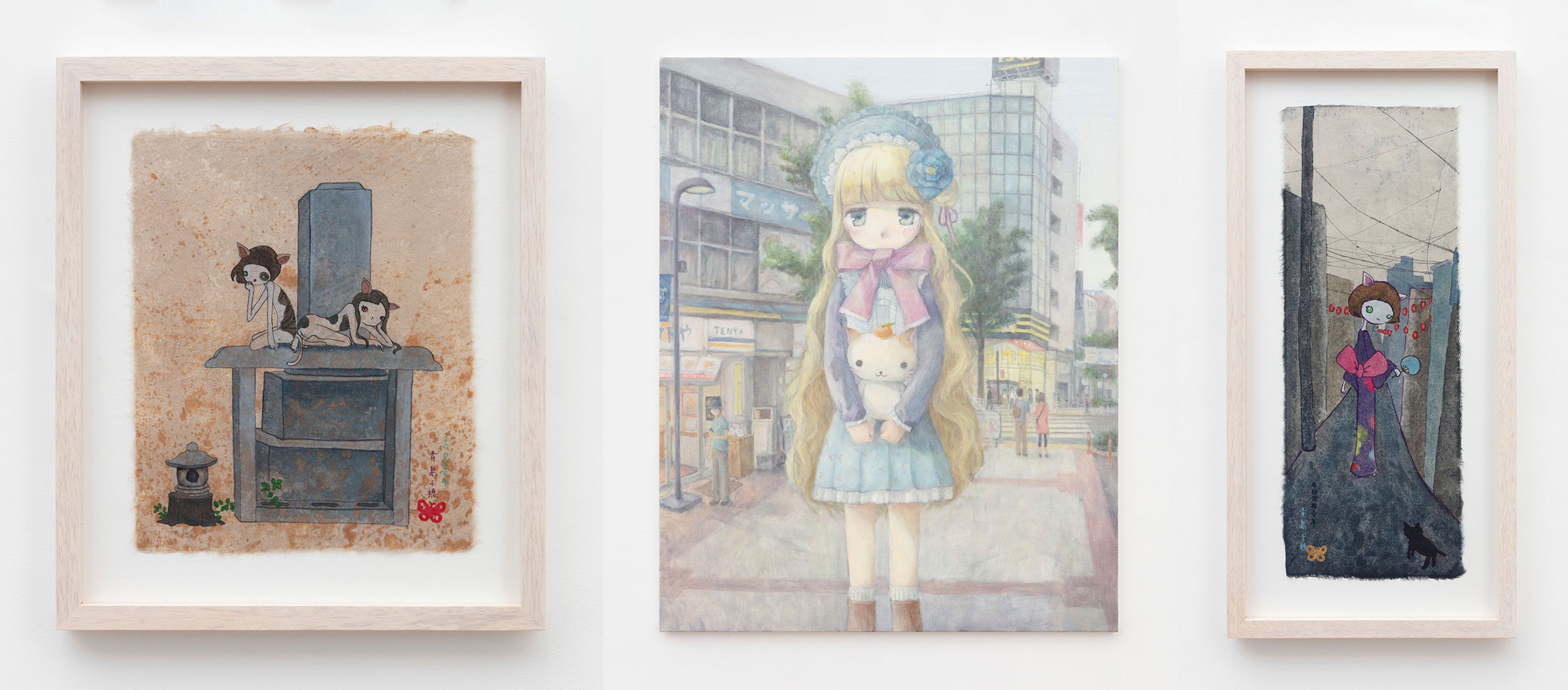
Center: Emi Kuraya, My Girl, 2020, 91 × 72 cm, Oil on canvas, © 2020 Emi Kuraya/Kaikai Kiki Co., Ltd. All Rights Reserved. Courtesy Perrotin
Right: Chiho AOSHIMA, On A Festival Night Near Harajuku, 2009, unframed : 39.5 × 15 cm, framed : 48.5 × 24 × 3.2 cm, Watercolor and color pencil on paper, © 2009 Chiho AOSHIMA/Kaikai Kiki Co., Ltd. All Rights Reserved. Courtesy Perrotin
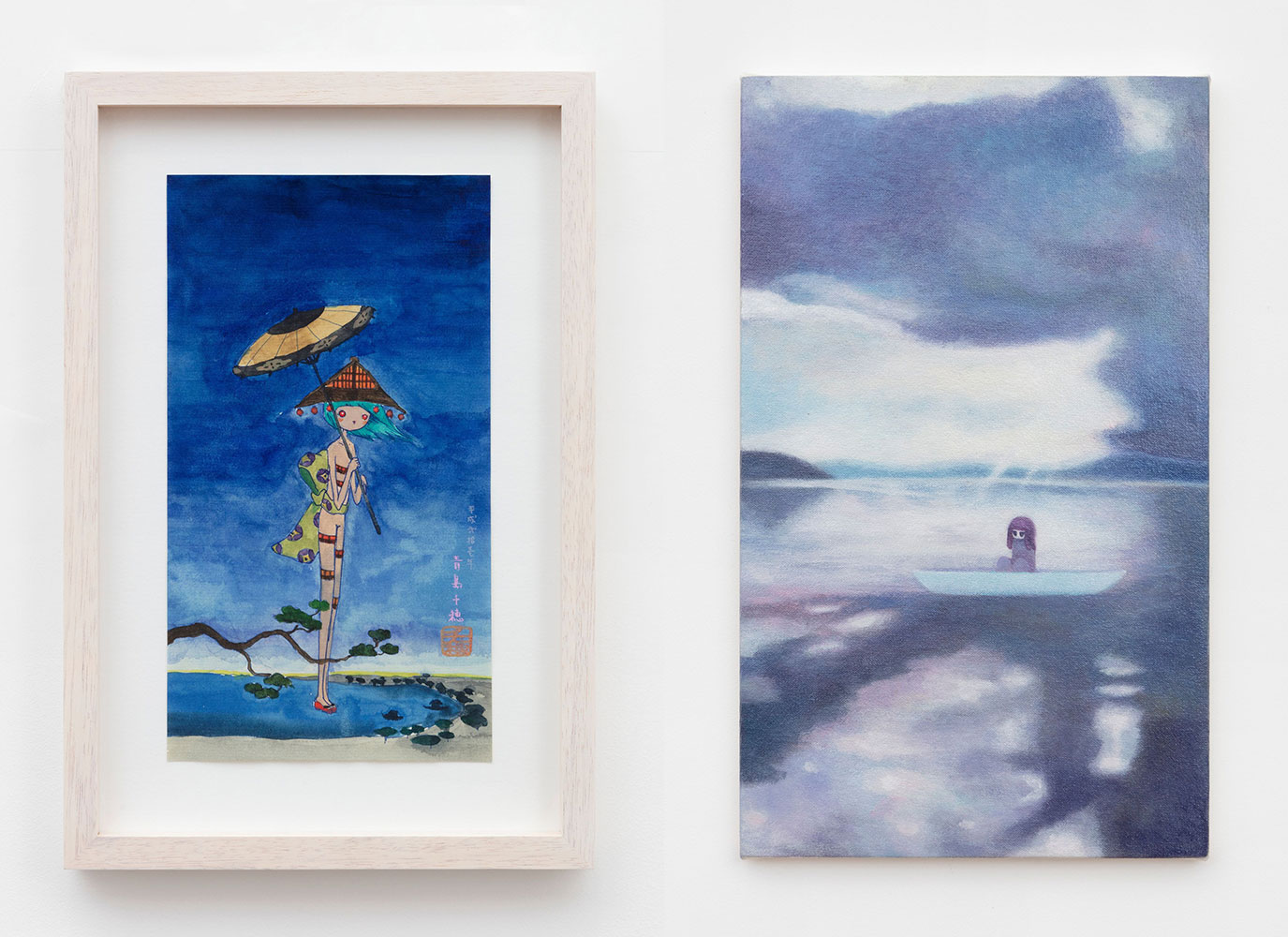
Right: OB, A Girl on a Boat, 2016, 46 × 27.5 cm, Oil on canvas, ©️ 2016 ob/Kaikai Kiki Co., Ltd. All Rights Reserved. Courtesy: Perrotin
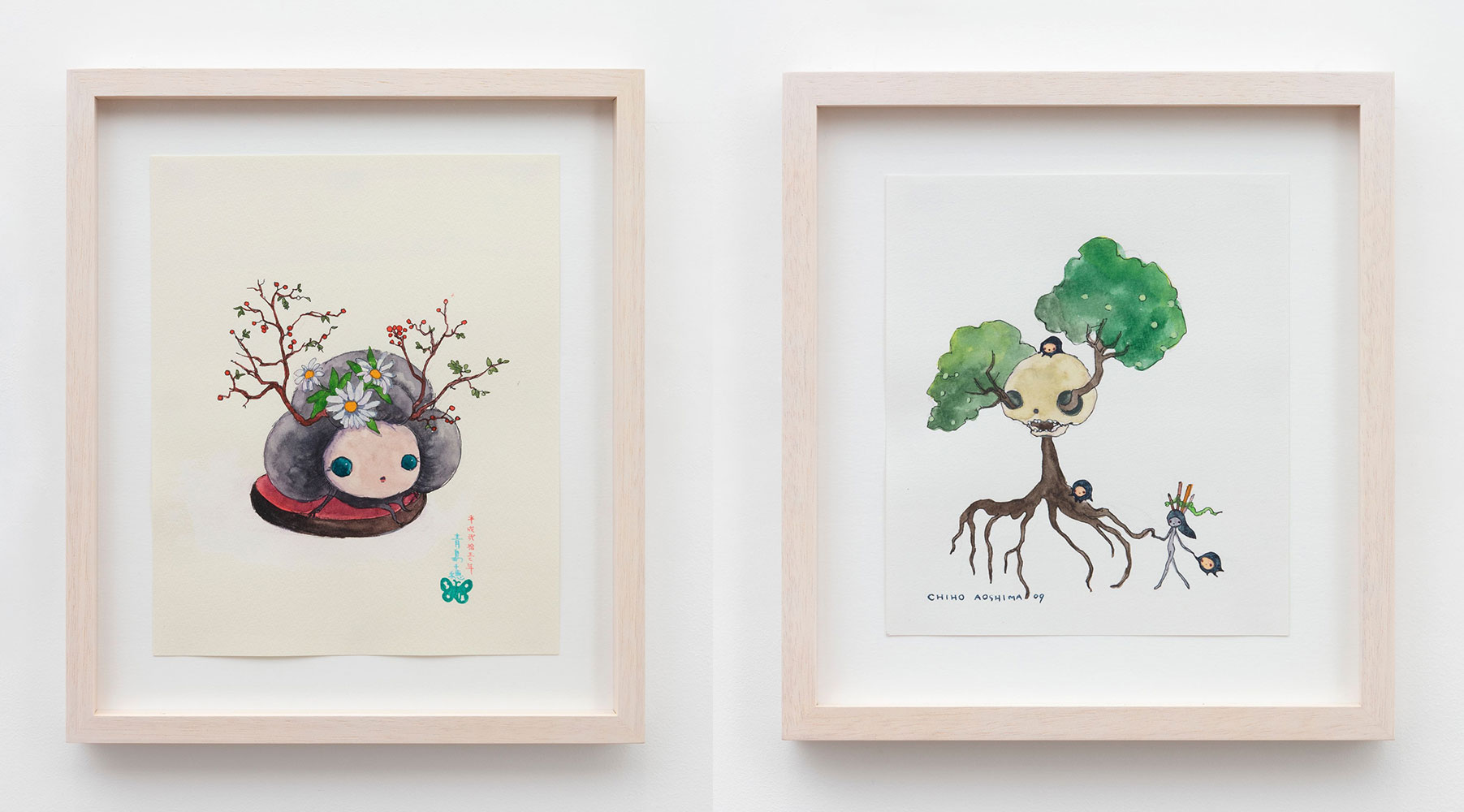
Right: Chiho AOSHIMA, A Walk In The Graveyard, 2009, unframed : 20.8 × 18.3 cm, framed : 29.8 × 27.4 × 3.2 cm, Watercolor and color pencil on paper, © 2009 Chiho AOSHIMA/Kaikai Kiki Co., Ltd. All Rights Reserved. Courtesy Perrotin
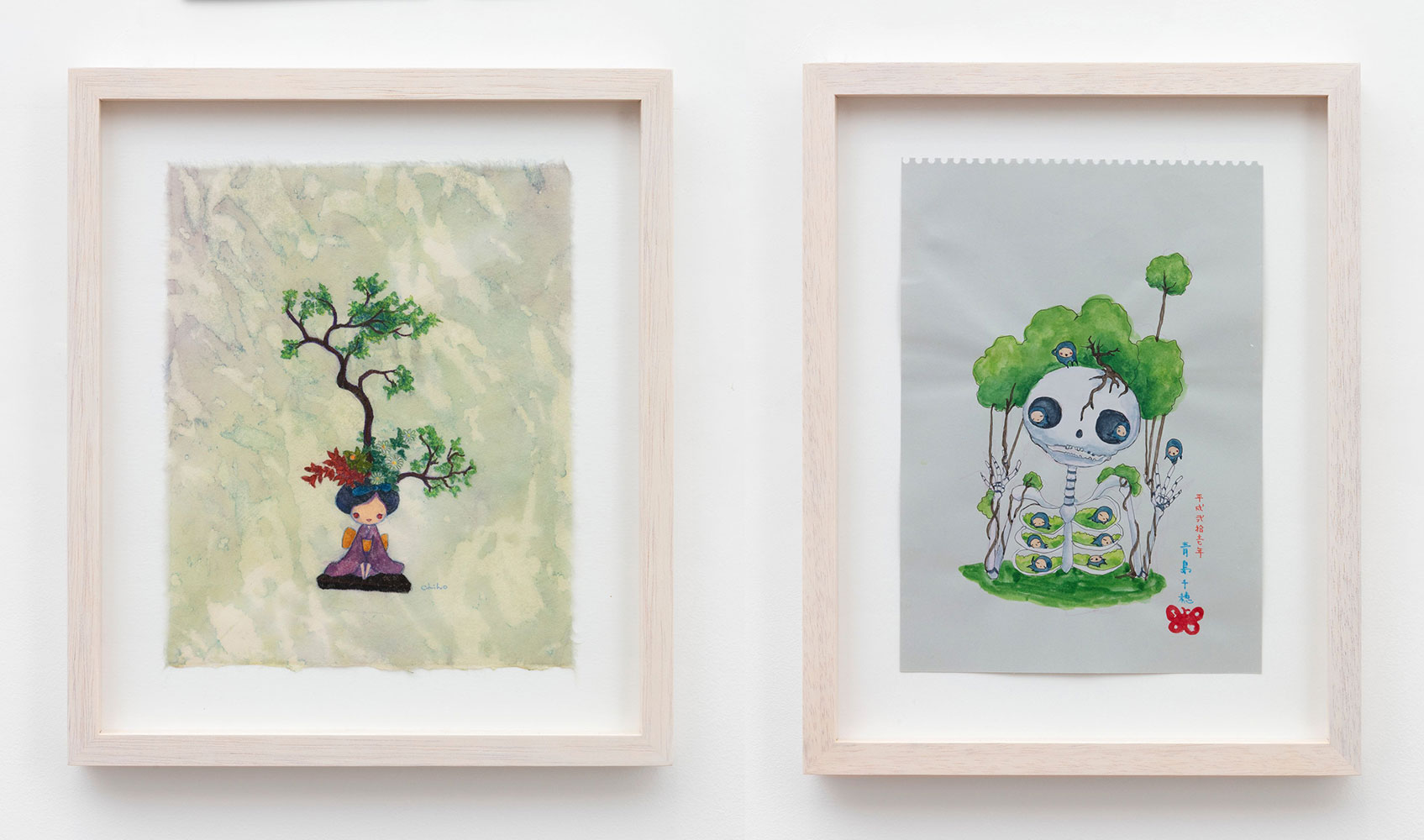
Right: Chiho AOSHIMA, Skeleton House 2, 2009, unframed : 24.2 × 17 cm, framed : 33.2 × 26 × 3.2 cm, Watercolor and color pencil on paper, © 2008 Chiho AOSHIMA/Kaikai Kiki Co., Ltd. All Rights Reserved. Courtesy Perrotin
